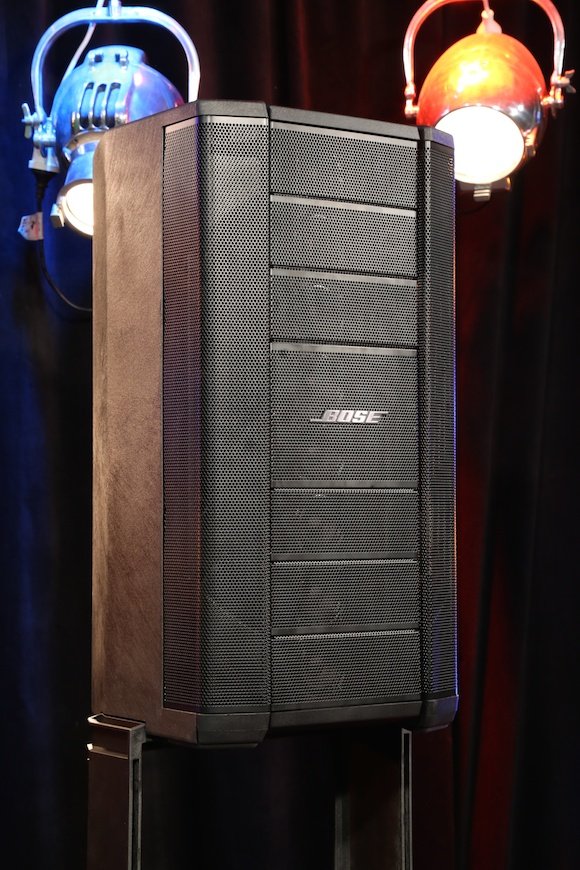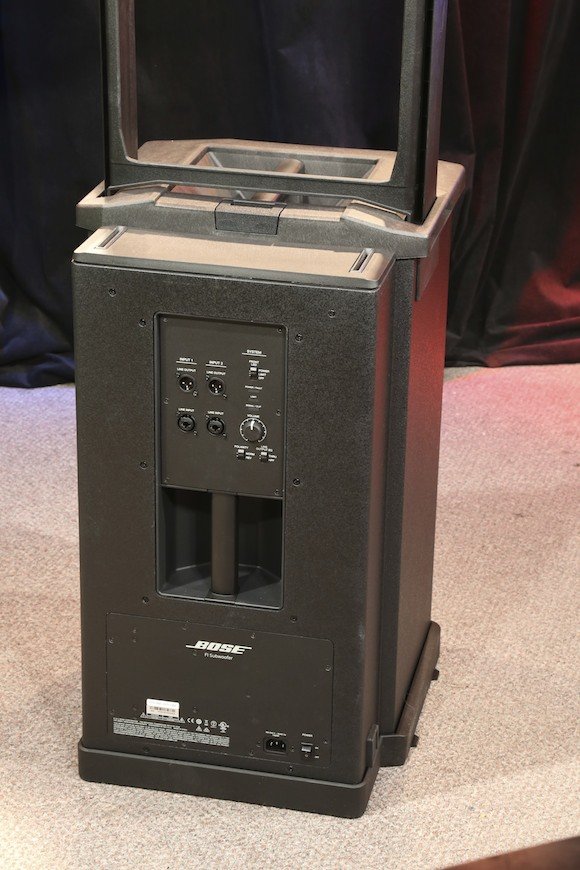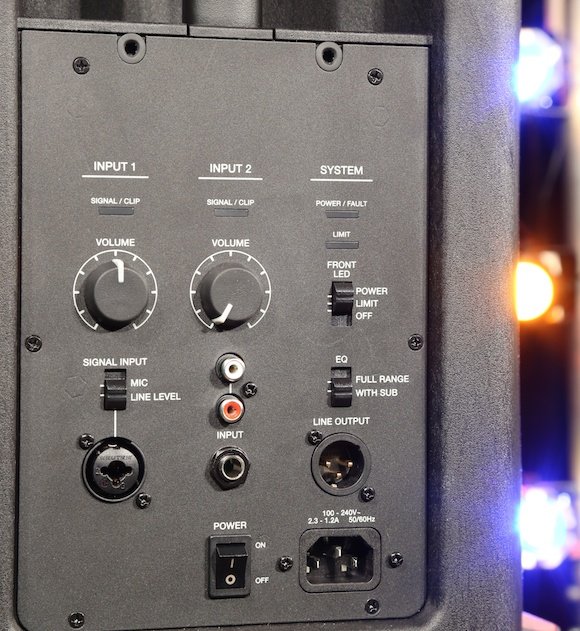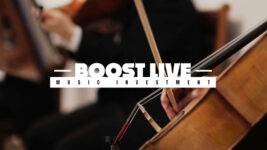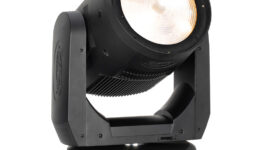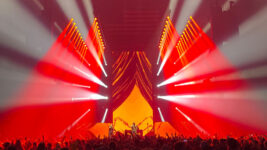News
8 Sep 2015
Review: BOSE F1 System
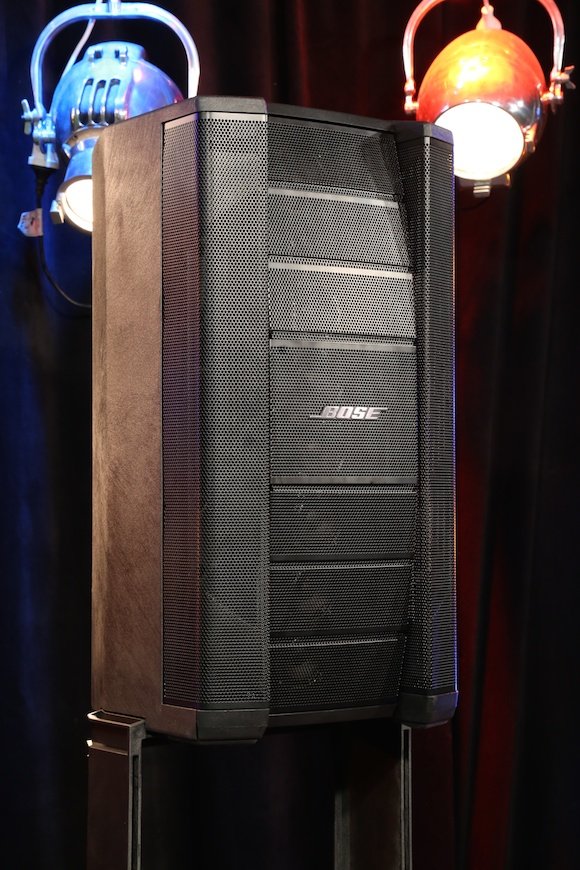
Subscribe to CX E-News
Flexible array loudspeaker system
Bose is a company that has kind of always done things its own way. The F1 system is no exception to this – I literally can’t think of anything on the market today which is remotely similar. Our test system comprised the F1 Model 812 flexible array loudspeaker with the optional F1 subwoofer. A removable frame is integrated into the rear of the subwoofer, and once this is unlatched and slotted into the top of the subwoofer, it forms a platform onto which the Model 812 can then be placed. The frame includes cable management slots, and as you’d well expect from Bose the entire system is neat and attractive in its appearance.
I’ve chosen my words carefully in this story, since my default practice of referring to the 812 as a “top box” would be a bit inaccurate. The 812 comprises a single 12” LF driver mounted behind eight 2.25” mid-high drivers, mounted on an adjustable baffle. Crossover frequency is 600Hz, nominal horizontal coverage is 100 degrees, and frequency response is listed as 52Hz – 15.5kHz (+/- 3dB). So you see, the 812 is closer to a full-range speaker than a mid-high. The mid-high drivers are individually mounted on waveguides, and this is where things get really interesting.
The centre two drivers are fixed in position, but the upper and lower sets of three waveguides and drivers can be independently tilted backward, allowing the vertical coverage of the Model 812 to be adjusted. Each of the upper and lower sections snap into place in the forward or backward position courtesy of magnets concealed within the enclosure. As each section snaps into place, subtle changes are made to the internal processing of the array to adjust the nominal vertical coverage. The Model 812 is internally bi-amplified, so presumably the processing changes relate to level.
Four modes are available – straight line, J curve, reverse J curve, or C curve. This allows the Model 812 to be used in a variety of different situations – the F1 website illustrates this very well with diagrams.
As physics has taught us, the lower the frequency you wish to steer, the longer the array you need to do this. For an array which is just a little over 66cm high, the Model 812 does quite a good job of directing sound in response to changes to the baffle configuration. It sends the sound where you point it, which (assuming you point it in the right direction) is a big win in reverberant spaces.
The back panel of the Model 812 includes IEC power connection and rocker switch, as well as dual audio inputs. The first input uses a combo XLR/TRS connector and it can be switched between mic and line sensitivity, while the second input offers dual RCA or a TRS jack. Independent level control and input signal LED is provided for each channel, and there’s also a “full range / with sub” switch, as well as a switch to control the front panel LED function (power, limit or off). The rear panel shows a power LED as well as an amp limit LED, and try as I might I was unable to drive the amp into limit before clipping the input channel. We ran pink noise into the Model 812 in full range mode, and at 1m recorded a maximum SPL of 117dBA(slow). Granted it wasn’t sounding quite itself at this point but it went way louder than I was expecting it to. When you’re not completely wringing its neck, the Model 812 sounds really good. Sonically it’s the most well-balanced Bose speaker I’ve ever heard. Impressive as it is, some users will require more low-end extension than the single 12” offers.
The good news is that the F1 Subwoofer matches up nicely with the Model 812. It comprises a pair of 10” drivers, and physically it’s just a bit larger than the 812, and at 24.9kg it’s still fairly manageable for one person. The integrated stand is a really nice idea, I just can’t help but wish they’d made the whole thing a bit taller to give the 812 some more elevation. The F1 subwoofer has dual XLR/TRS combo jack inputs with line outputs and common level control. Slide switches allow for polarity reversal and HPF on the line outputs.
While the F1 sub is clearly designed as part of the F1 system, it’s also generic and flexible enough you could use it in conjunction with other products. It strikes me that this is almost a new level of ‘interoperability’ for Bose, and I think it’s a very positive move indeed. I’m of the opinion that Bose has always made good subs, and the F1 sub is no exception to this. It pushes out very respectable level for a compact little unit, and I found I needed to turn it down a little from the centre detent to prevent it from dominating the system.
I was not sure what to expect from the F1 system. I thought the flexible array thing would be a bit of a gimmick, but having played with it I can see it being quite useful in real-world applications.
I like how the system sounds, and the way it’s refreshingly compatible with other gear. Most of all, I like the price, which is around the same as you’d pay for a 12” & horn and subwoofer system from any other reputable manufacturer. F1 is market competitive to start with, and the flexible coverage options only add to the value.
- Brand: BOSE
- Model: F1 System
- Price: F1 Model 812 – AUD$1699 inc GST. F1 Subwoofer – AUD$1699 inc GST.
- Product Info: f1.bose.com.au
- Distributor: bose.com.au
Subscribe
Published monthly since 1991, our famous AV industry magazine is free for download or pay for print. Subscribers also receive CX News, our free weekly email with the latest industry news and jobs.

